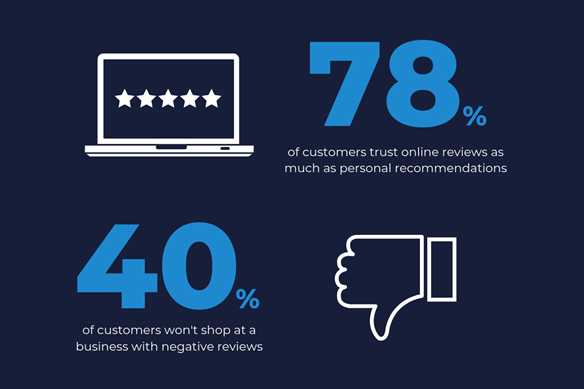In 2020, global eCommerce sales totalled more than $4 trillion. That’s more than double the amount from 2015 – and data suggests that growth will continue to be strong moving forward.
ECommerce businesses have unfettered access to millions of consumers who actively seek out products and services, too. Yet, you can’t just expect them to show up at your site without any encouragement.
Unfortunately, many business owners new to the eCommerce way of life do not understand this. They do not take the steps needed to empower their website and optimize their content. That’s particularly true of product pages, an aspect of an online store that should hold great importance.
However tempting it might be to take the easy approach, the most effective course of action doesn’t allow for shortcuts. By using the power of SEO, you can dramatically improve the exposure that your product pages experience. This will lead to sustained improvements in not just site visits, but your eCommerce conversion rate too.
Learn how to optimize your site’s product pages which will have wide-ranging impacts on your business, all of which sparkle with positivity.

(Image Source: Search engine marketing statistics 2020 | Smart Insights)
Understanding eCommerce Product Pages
At their most basic, product pages are simply web pages that list and describe products or services that can be purchased.
These pages are where your website’s visitors will come to learn about the product. A product page acts as both an information cache and a persuasive sales tool. This can be a challenge for marketers, particularly when the product being sold is also available elsewhere.
But there are ways to set yourself apart, and in doing so, raise the profile of your website on search engine results pages (SERPs).
What is SEO?
If you’re in the eCommerce industry, you’re surely already familiar with search engine optimization, at least to an extent.
In eCommerce, SEO is the process of improving and upgrading your site’s content to make it more visible in search results. The idea is that people will search for a product or service – which could be anything from a sofa to a VoIP phone service – and if you harness SEO your website should appear higher up in the results as a consequence of your endeavors.
SEO efforts can be carried out both on and off-site, but with product pages, we’re concerned with the former.
Why is SEO Important?
Many eCommerce proprietors believe that if they have the best services or products, then, sooner or later, the shoppers will arrive.
That’s very rarely the case. The truth is that many consumers start their shopping journeys with a search engine. If your website isn’t optimized for search engines, you’ll likely miss out on sales that would have otherwise been a certainty.
Just a few of the benefits of SEO include:
- Visibility and rankings – the better your ranking, the more visible you are for interested shoppers. You have to be seen to be considered.
- Website traffic – with higher exposure comes a greater volume of website traffic. If users are actively reading your content – whether that’s blog material, product pages, or something else – the more they are likely to make a purchase.
- Authority and credibility – it’s important that eCommerce sites are credible and reputable. An improved SERP ranking will give your website more legitimacy in the eyes of consumers.
How to Optimize Your Product Pages
Creating search engine optimized product pages isn’t as simple as throwing in a few keywords here and there. You need to take a measured approach to build product pages that offer value and usability.
Follow these tips to reach higher performance levels, and to avoid some common mistakes.
Prioritize Data
For eCommerce stores, data is a goldmine.
You can learn all sorts of things about the performance of your website, the visitors that check out your products and services, and so much more on top of that. Failing to use this data is akin to wandering around with a blindfold on – you’re not going to make any significant progress.
Data analytics software such as the Searchmetrics Suite can help you pinpoint which parts of your online store are performing well in some areas, but less well in others. It can tell you about the product pages which aren’t getting sales. The deeper you delve into these matters, the more likely it is that you can make positive changes.
Looking into the data behind your performance should be one of the first things that you do. This information can help inform and direct your marketing and SEO efforts going forward.
Integrate Relevant Keywords
You need to bear in mind that there are many well-established SEO strategies that are worth your attention.
It’s possible that you’ve been thinking you need to rigidly stick to standardized product descriptions that are found elsewhere – especially if you’re selling a product from a wholesaler – but that’s not the case.
Research keywords to see what customers are searching for, and at what volume. With access to this information, you’re far better placed to integrate these short and long-tail keywords into your product pages.
It should not come as a surprise that a product page that has information specifically related to the relevant search term is likely to perform better. If you want to get your product pages ranking more highly, this is essential.
Cover the Smallest Details
In SEO, even the most minor changes can make a substantial difference to a page’s performance.
Adding structured data to your website allows Google to add rich snippets on the results page, which can give you a competitive edge against your SERP neighbors. This might allow you to show off reviews and ratings, which are especially helpful for establishing your site as a great choice for a consumer.
Descriptive headers instil clarity, while informative title tags and meta descriptions can help entice search engine users more effectively.
Avoid Replicating Copy
When you’re creating product pages for items that are sold elsewhere, it’s sometimes tempting to take the standardized copy from other sites for yourself. These sites rank well in SERPs, and the copy is well written – what’s the harm? Unfortunately, that’s not how things work.
By taking copy from a better-performing website, you’re removing the chance for you to make ground on them. Unique copy on a product page isn’t the biggest SEO factor, but it still makes a difference.
It’s also another example of the different challenges present in the retail vs wholesale argument. As an eCommerce retailer, you have your work cut out for you in connecting with your audience using content. On the other hand, wholesalers can focus on cost and practicality.

(Image Source: 26 Online Review Statistics You Need to Know – Boast)
Offer Consistent Content
Getting the best from your product pages means delivering consistent content across your website.
The design, structure, and uniformity of your content need to be prioritized. Users enjoy consistency, and getting what they expect from you is likely to keep them engaged and invested. The ongoing presence of reviews and high-quality imagery also builds trust.
Conversely, inconsistent content and design are going to have the opposite impact. Visitors will leave your product pages and seek alternatives. This will drive up your bounce rate, which has a damaging impact on SEO performance.
Deliver Simple Information
When people are looking to buy a product, they want the facts. In general, people do not care if a product is high-ranking, at least, not in isolation.
Take an example:
A person is looking for a telecommunications solution for their business. This individual wants to be able to take calls from anywhere, without buying another phone. They come across an eCommerce site that offers virtual mobile phone number service. This is exactly the type of solution they need.
However, the website doesn’t manage to describe these features – instead focusing on the fact that it is a popular item. The user moves on, missing out on a product that could have been a great fit.
You can avoid such issues by sticking to the facts. Search engines and your audience will appreciate it.

(Image Source: What Video Marketers Should Know in 2021, According to Wyzowl Research (hubspot.com)
Add Videos and Imagery
While words are the primary vehicle you’ll use to make your case, you should still use videos and imagery for your product pages as well.
Video content is especially effective. It helps users understand the product. Seeing an item in action helps to alleviate fears about the quality of the product.
Yet, it isn’t just the persuasiveness of imagery and video content that’s useful. Search engines reward product pages that have video content, which means you’re going to enjoy increased organic traffic too.
The key is to make sure that you’re only using high-quality images and videos. Pixelated, low-resolution content will frustrate users and search engines alike.
Avoid Too Many CTAs
A call-to-action (CTA) can be a powerful tool, but you need to use them with subtlety. When you add too many CTAs on a product page, it becomes off-putting for the customer. On the whole, people do not enjoy a hard sell.
Pick your moments to add a call-to-action – the last thing you want is for it to seem like you’re desperate to make a sale.
It’s more effective to offer value and utility through your product, with a gentler push to make the sale. When pages begin to seem spammy, bounce rates increase.
A Potent Combination: Product Pages and SEO
Many eCommerce stores make the mistake of thinking product pages are exempt from search engine optimization requirements. Make sure that you don’t fall into that category.
By using SEO, it’s possible to improve the ranking of your product pages by a substantial margin. These efforts will also have a positive impact on customer behavior too, raising engagement and conversion rates.
This dual enhancement is certain to improve matters for your ecommerce operation.
Want insights on the current online retail landscape?
Download our US eCommerce Market Analysis 2021 or our UK eCommerce Market Analysis 2021 and get the lowdown on who’s winning the rankings and customer search intent across seven key sectors along with top tips to boost your website visibility!
